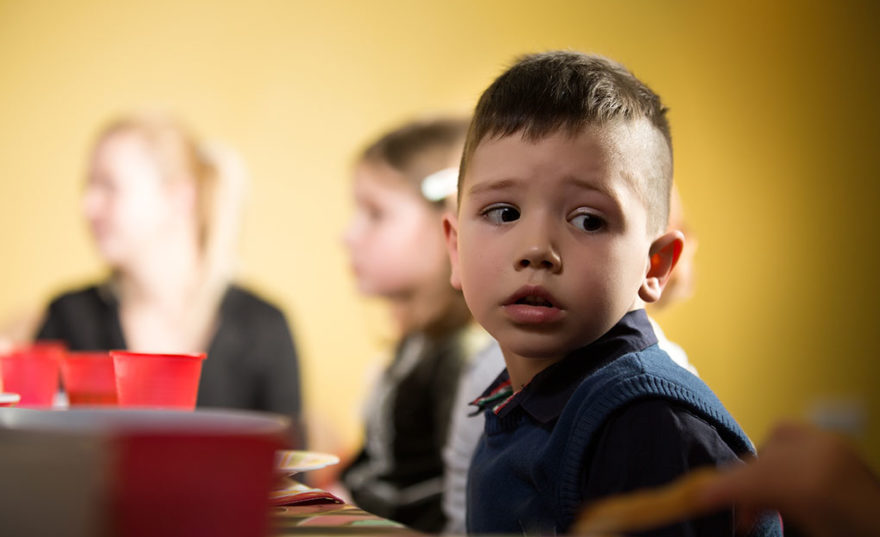يمكن تصنيف التذبذبات في نشاط المخ الجبهي على أنها موجات بطيئة (دلتا) أو موجات سريعة (بيتا) والتي لها ارتباطات وظيفية وسلوكية مختلفة. أظهر تسجيل هذه الموجات بواسطة تخطيط كهربية الدماغ أن تذبذبات موجات دلتا وبيتا المقترنة قد تكون مرتبطة بنشاط الغدد الصماء العصبية العليا (بالتحديد الكورتيزول) والقلق الاجتماعي عند البالغين (1) ؛عما إذا كان هذا هو الحال عند الأطفال ؛ فذلك غير واضح. والآن بكندا(McMaster) قام باحثون من جامعة ماك ماستر
بفحص عما إذا كانت الفروق الفردية في مستويات الكورتيزول الأساسية في اللعاب وعند مستويات القلق التي أبلغ عنها الوالدين مرتبطة براحة أو نشاط موجات دلتا-بيتا الأمامية المقترنة.
لقد قاموا بجمع قراءات تخطيط كهربية الدماغ من 50 طفلاً بمتوسط عمر 7.59 عامًا ، وربطوا البيانات مع مستويات الكورتيزول اللعابية الأساسية ومستويات القلق الاجتماعي التي تم جمعها في نقطتين زمنيتين ، مفصولة بسنة واحدة. ووجدوا إرتفاع ثابت في مستويات الكورتيزول اللعابية الأساسية والقلق الاجتماعي عبر نقطتي التوقيت، كانت مرتبطة بشكل مستقل بعلو نسبي في نشاط موجة دلتا-بيتا.
يقترح الباحثون أن مثل هذه الأنماط التذبذبية العصبية قد تساعد في تحديد الأطفال المعرضين لخطر التجنب المستقر والمظاهرالمرتبطة بالخوف. إنهم يعتبرون أن الدراسات المستقبلية يجب أن تمدد مثل هذه الدراسات الطولية لنشاط موجة دلتا-بيتا المقترنة ، بدءا من الطفولة المبكرة من أجل فهم أفضل لقيمة نشاط موجة دلتا-بيتا المقترنة في التنبؤ بالتطورالاجتماعي والعاطفي عند الأطفال. علاوة على ذلك، هناك حاجة إلى العمل لاستكشاف الإمكانات المستقبلية للتدخلات النفسية على هذه العلاقات المتبادلة لتقليل القلق الاجتماعي لدى كل من البالغين والأطفال.
المراجع:
Schmidt, L.A. and Poole, K.L. (2019), Frontal brain delta-beta correlation, salivary cortisol, and social anxiety in children. J. Child Psychol. Psychiatr. 60: 646-654. doi: 10.1111/jcpp.13016.
قراءة إضافية:
1 Miskovic V. et al. (2010), Frontal brain oscillations and social anxiety: a cross-frequency spectral analysis during baseline and speech anticipation. Biol Psychol. 83:125-132. doi: 10.1016/j. biopsycho.2009.11.010.
قائمة المصطلحات:
تخطيط كهربية الدماغ :(EEG) طريقة غير جراحية كهروفيزيولوجية لتسجيل النشاط الكهربائي الناتج عن الخلايا العصبية المتزامنة في المخ.
الكورتيزول: هرمون الستيرويد من نوع الغلوكورتيكويد يصنع في الغدة الكظرية ويسيطرعليه تحت المهاد والغدة النخامية والغدة الكظرية. يُشار إلى الكورتيزول عادةً باسم “هرمون الإجهاد” ، وعادةً ما يتم إطلاقه أثناء الإجهاد ، ولكنه يساعد أيضًا في تنظيم مستويات السكر في الدم والتمثيل الغذائي والالتهاب.
موجة دلتا: موجة عالية السعة تنتج في المخ ، مع تردد منخفض التذبذب من 0،5-4 هيرتز. عادة ما يرتبط نشاط موجة دلتا بالمرحلة 3 (NREM)للنوم.
موجة بيتا (Beta wave): موجة منخفضة السعة تنتج في المخ ، مع تردد تذبذب عالٍ يتراوح بين 12.5 و 30 هيرتز. عادة ما يرتبط نشاط موجة بيتا باليقظة.
Oscillations in frontal brain activity can be categorised as slow (delta) or fast (beta) waves that have different functional and behavioural correlates. Recording these waves by electroencephalography (EEG) has shown that coupled delta-wave and beta-wave oscillations might be a correlate of higher neuroendocrine (namely cortisol) activity and social anxiety in adults;1 whether this is the case in children, however, is unclear. Now, researchers from McMaster University, Canada, have examined whether individual differences in salivary cortisol levels at baseline and parent-reported social anxiety levels are associated with resting, coupled delta–beta frontal wave activity.
They collected EEG recordings from 50 children with a mean age of 7.59 years and collated the data with basal salivary cortisol and social anxiety levels collected at two time points, separated by 1 year. They found that stably high basal salivary cortisol levels and social anxiety across the two time-points, were independently associated with relatively high, correlated delta–beta-wave activity.
The researchers propose that such neural oscillatory patterns may help identify children at risk for stable avoidance and fear-related profiles. They consider that future studies should extend such longitudinal analyses of coupled delta–beta-wave activity, starting from early childhood to better understand the value of coupled delta–beta-wave activity in predicting social and emotional development in children. Furthermore, work is needed to explore the future potential of psychological interventions on these correlations to reduce social anxiety in both adults and children.
Schmidt, L.A. and Poole, K.L. (2019), Frontal brain delta-beta correlation, salivary cortisol, and social anxiety in children. J. Child Psychol. Psychiatr. 60: 646-654. doi:10.1111/jcpp.13016
A pdf version of this article is available to download from the sidebar.
Further reading
1Miskovic V. et al. (2010), Frontal brain oscillations and social anxiety: a cross-frequency spectral analysis during baseline and speech anticipation. Biol Psychol. 83:125-132. doi:10.1016/j.biopsycho.2009.11.010
Glossary
Electroencephalography (EEG): a non-invasive, electrophysiological method to record electrical activity generated by synchronised neurons in the brain.
Cortisol: a glucocorticoid-class steroid hormone made in the adrenal gland and controlled by the hypothalamus, pituitary gland and adrenal gland. Often referred to as the “stress hormone”, cortisol is typically released during stress, but also helps regulate blood sugar levels, metabolism and inflammation.
Delta wave: a high-amplitude wave produced in the brain, with a low oscillation frequency of ~0.5-4 hertz. Delta-wave activity is typically associated with stage 3 NREM sleep.
Beta wave: a low-amplitude wave produced in the brain, with a high oscillation frequency of ~12.5-30 hertz. Beta wave activity is typically associated with wakefulness.
